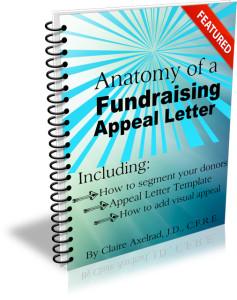
Use art + science to enter your donor’s mind and heart
I recently had the opportunity to present a webinar for the Fired Up Fundraising Community on the topic of creating a compelling fundraising offer your donor can’t refuse. We covered a lot of territory, so at the end there was limited time for questions. Many were left unanswered. So…
I decided to answer in writing the ones that seemed to be repeated by more than one person. These challenges, it appeared, were common enough they required some solutions. Or, at the very least, some clairification!
I sent the Q & A to all the webinar participants and thought, gee whiz, why don’t I share it with all of you too?
Here we go…!!!
1. What is your feeling about incentives? For example, if you give to the annual fund you will be entered into a drawing for XYZ?
Premiums may actually depress response.
An interesting study by Yale School of Management found that thank-you gifts reduce charitable donations. The authors attribute the decrease in donations to what they call the “crowding out” effect. In other words, offering a gift to a donor in exchange for their gift may “crowd out” the good feelings a donor gets from giving. They might also give you a token gift that comes not from love of your cause, but from love of the opportunity to win a prize. It’s a bit like folks who attend charity golf tournaments because they’re golfers, rather than folks who value your mission. In the long run, this costs you money and does not build donor loyalty. You can read more about this here: Offer Nonprofit Donors Gratitude Experiences, Not Tote Bags.
2. We do not deliver direct service; we are more of a “back bone” organization working on systems level change. I struggle with the cost aspect of the problem. Should I create a hypothetical scenario?
“Own” the work of your beneficiaries. What they accomplish is done through your support.
Tell the stories of the other organizations and initiatives you support. Let folks know their philanthropy goes towards this vital work. Donors invest in you because they trust you to invest wisely on a scale that can move the needle on the community’s most pressing problems. Remember: Donors don’t really care how you make change happen. They care there’s a problem, and they can help resolve that problem with their gift. “Direct” vs. “indirect” help? That’s a process issue, not an impact issue.
3. Question – how long should the letter be? 2 page? 4 page?
As long as it needs to be to tell a compelling, resonant story and make a specific offer your donor can’t refuse.
The size isn’t what matters, it’s the quality. Letter length will vary depending on a variety of factors. Here are some general guidelines (but it’s always best to test for yourself).
- Donor acquisition letters are longer, because prospects know very little about you. Four pages or longer is not unusual.
- Letters to senior audiences are longer, because these prospects don’t mind reading (and they have more time).
- Letters to current donors are shorter as you don’t need to explain who you are.
- Online appeals are shorter, as folks have limited attention spans when viewing text online.
4. Should you start the letter Dear Mr. and Mrs. Goldstein or is it better to say Dear Carol and David?
We’re in the 21st century, and it’s an informal zeitgeist. Today, I recommend erring on the side of the informal. Use formal salutations only in the following situations:
- Clergy
- Elected officials
- Royalty
- Active military
- You 100% know someone prefers this because they’ve told you.
5. Our clients are children who have been abused, and we have to follow strict confidentiality policies. What would you recommend for using a photo?
Bottom line: Stories drive donations.
Preferably, a story about one person, place or thing. However you can manage it, you absolutely want to tell a genuine, compelling story. A story of “before” the donor’s help, and “after” the donor’s help. Dry facts won’t do it for people. They need drama. Something they can visualize. And relate to. They need you to show them it’s within their power to change the world – one drama at a time. Create dramas and invite your readers to join with you to achieve your goals, and theirs. Read more about this here: ONE Incredibly Dramatic Way to Create Winning Content.
You can create drama and comply with confidentiality policies. Here are some tips to help you respect clients’ privacy and concerns, while still honoring your donors’ need to hear genuine stories.
- Build a storytelling culture. It’s important program staff be on the same page as development staff. The reason you want to tell a story is to further your mission. The reason program staff want to protect confidentiality is to further your mission. So… have a conversation about what you have in common. Then explore your different concerns. Get everything out into the open, and see if you can find creative solutions to the problem. See 6 Best Ways to Make Storytelling Part of Your Nonprofit Culture.
- Don’t say “no” on behalf of clients. Some people are happy to share their story, so always ask. I will often share with clients how doing so can help others like them. I’ve found many people actually feel empowered when given this opportunity to make a difference.
- Don’t use a client’s photo without permission. Get a signed release.
- See if you can get permission to use their photo while obscuring their identity. You might blur their image, or show them from the back. Or show a caseworker hugging them, while their face is hidden. Get a signed release.
- Don’t use a client’s real name without permission. Change it and be honest about it. For instance, say “George is not his real name.”
- Omit personal details that might give away the person’s identity. It’s okay to change names, gender, ages and so forth, as long as you let readers know. Say “Some details have been changed to maintain confidentiality.”
- Allow the person whose story you’re telling to approve your copy. It’s important to let clients know their story is safe with you. Let you know you won’t share anything they’re uncomfortable with. Not only will the client feel safer, your program staff will also feel better (and, hopefully, more cooperative).
- Use stock photos and a disclaimer. For example: “The story told here is true, yet the name, image and identifying information may have been changed to protect individual privacy.”
- Create a composite story. You can blend details from several profiles into a single person’s story. Again, use a disclaimer (which can be footnoted) acknowledging you’ve done this.
6. What are better words to use than underserved? At risk? Others?
Avoid jargon, which is generally internal code and not easily comprehensible to outsiders.
When words and phrases pertain so universally as to become essentially meaningless, this is a form of jargon. Jargon can make it take longer for folks to appreciate what you’re trying to say. It stops readers dead in their tracks — something you absolutely don’t want to happen with folks who have limited time (almost everybody). You want to create an easy reading flow that’s immediately comprehensible to all of your readers. So ask yourself the underlying meaning of words like “underserved” or “at risk.” Do you mean “poor”…? “Elderly…” “Sick…?” “Latchkey kids?” Try to find a more precise word to convey your meaning. Also see 6 Types of Modern Jargon to Avoid in Your Fundraising Appeal and 8 Tools to Be a More Effective Nonprofit Writer.
Want to Craft the Perfect Fundraising Appeal?

This 62-page guide will take your appeal letter from run of the mill to out of the ballpark!
How much more money could you raise with your appeal letter if it spoke straight to the heart – and to your donor’s passions? You may wish to grab Anatomy of a Fundraising Appeal + Sample Template. I think you’ll love this step-by-step guide to crafting a killer appeal letter or email appeal. It’s practical, and filled with all the knowledge I’ve gained from 30+ years of experience in the trenches. I’ve done this! I know what works; I know where it’s easy to get stuck.






nice post